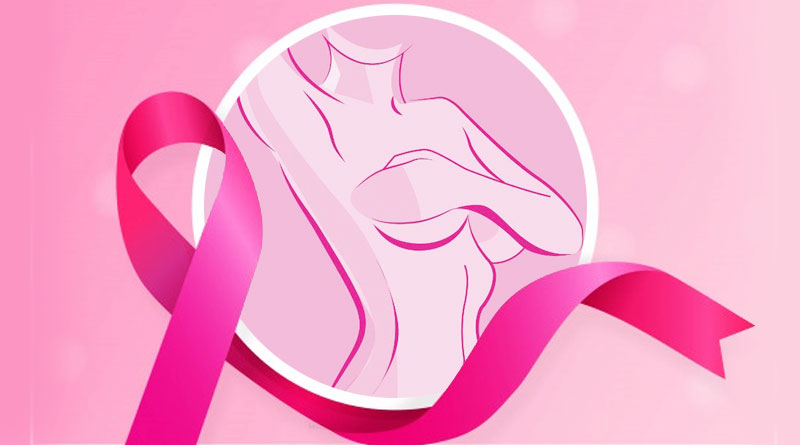Breast Cancer Early Detection Can Save Lives
October is National Breast Cancer Awareness Month
October is designated as National Breast Cancer Awareness Month, a time of the year in which a large number of companies and individuals come together to promote breast cancer awareness, share information on the disease (risk and preventive measures) and provide access to different services and support.
About 1 in 8 U.S. women will develop invasive breast cancer over the course of her lifetime. About 40,610 women in the U.S. are expected to die in 2017 from breast cancer, though death rates have been decreasing since 1989. Women under 50 have experienced larger decreases. These decreases are thought to be the result of treatment advances, earlier detection through screening, and increased awareness.
Effective education, screening and healthy habits are extremely important. Part of the awareness is learning how to recognize early signs of cancer and seek prompt medical attention for symptoms. Most cases of breast cancer are found by women noticing unusual changes in their bodies, taking the initiative and making an appointment to see the doctor as soon as possible.
While it’s true that most lumps are found by women themselves, the abnormality in a breast can be so difficult to feel that only someone with experience would recognize it. Lumps, thickening, asymmetry (a difference in appearance between the two breasts) — changes in your breasts that you may not notice or think are “normal” — may be detected by a health professional who examines many breasts regularly.
Breastcancer.org recommends that women have a breast physical exam by a health professional every year.
Here’s a quick and easy guide on how to check your breasts!
There are 3 best ways to check your breasts:
- In the Mirror – Look at your breasts in the mirror, first with your arms at your sides, then high above your head. Look for any changes in contour, any swelling, dimpling of the skin, or changes to the nipples. Then, put your hands on your hips and flex your chest muscles like Wonder Woman, examining for the same changes.
- In the Shower – With the pads of your fingers, feel around your breast in a circular motion. Be sure to check the entire breast and armpit area. Feel for any lumps, thickening, or a hardened knot.
- Lying Down – Put a pillow under your right shoulder and raise your right arm above your head. Use light, medium, and firm pressures as you move your fingers in small circular motions, covering the entire breast and armpit area. Squeeze the nipple, check for lumps and discharge, then repeat these steps for your left breast.
Use a variety of motions and pressures. This will help make sure that you are examining your breasts thoroughly.
Important Things to Know About Mammograms
Mammography is our most powerful breast cancer detection tool. Mammograms can save your life. Finding breast cancer early reduces your risk of dying from the disease by 25-30% or more. Women should begin having mammograms yearly at age 40, or earlier if they’re at high risk.
Mammography is a fast procedure (about 20 minutes), and discomfort is minimal for most women. The procedure is safe: there’s only a very tiny amount of radiation exposure from a mammogram. To relieve the anxiety of waiting for results, try to go to a center that will give you results before you leave.
Try to get a digital mammogram. A digital mammogram is recorded onto a computer so that doctors can enlarge certain sections to look at them more closely.
If you’re at high risk of breast cancer, have a strong family history of breast or ovarian cancer, or have had radiation treatment to the chest in the past, it’s recommended that you start having annual mammograms at a younger age (often beginning around age 30). Discuss your personalized screening plan with your healthcare provider.
The information for this article was provided by Breastcancer.org, a nonprofit organization dedicated to providing the most reliable, complete, and up-to-date information about breast cancer and breast health as well as an active and supportive online community.


For those with integrity and who want to actually know the real truth, there are two excellent independent scientific books that irrefutably document that regular mammography is a scam: ‘Mammography Screening: Truth, Lies and Controversy’ by Peter Gotzsche and ‘The Mammogram Myth’ by Rolf Hefti.
For largely unknown factual information on the fraudulent ‘war on cancer’ and the breast cancer awareness movement do a search for “A Mammogram Letter The British Medical Journal Censored” by Rolf Hefti and scroll down to the afterword that addresses the ‘war on cancer’ and the pink ribbon movement.
Once you have read this set of solid factual information one or the other of the following will happen to you:
“When people who are honestly mistaken learn the truth, they will either cease being mistaken, or cease being honest!” (Anonymous)
Once you know that information you will never look at the cancer industry and orthodox medicine the same way because you have woken up to authentic reality rather than continuing to be hoodwinked by a fabricated fake reality. Or… you keep being dishonest and thereby contribute to the fake reality, the official lies, and be an active culpable contributor and builder of the destructive lying culture.
Pingback: South Florida Hispanic Chamber of Commerce on Breast Cancer
Women deserve to be properly informed on pros and cons of mammograms. Overdiagnosis and overtreatment of “stage zero” breast cancer (DCIS) is an epidemic. I have personally experienced this and spent years compiling research and advocating for women’s health-care rights. Please learn more here: https://dcis411.com/over-diagnosis-411/bewise/